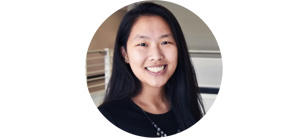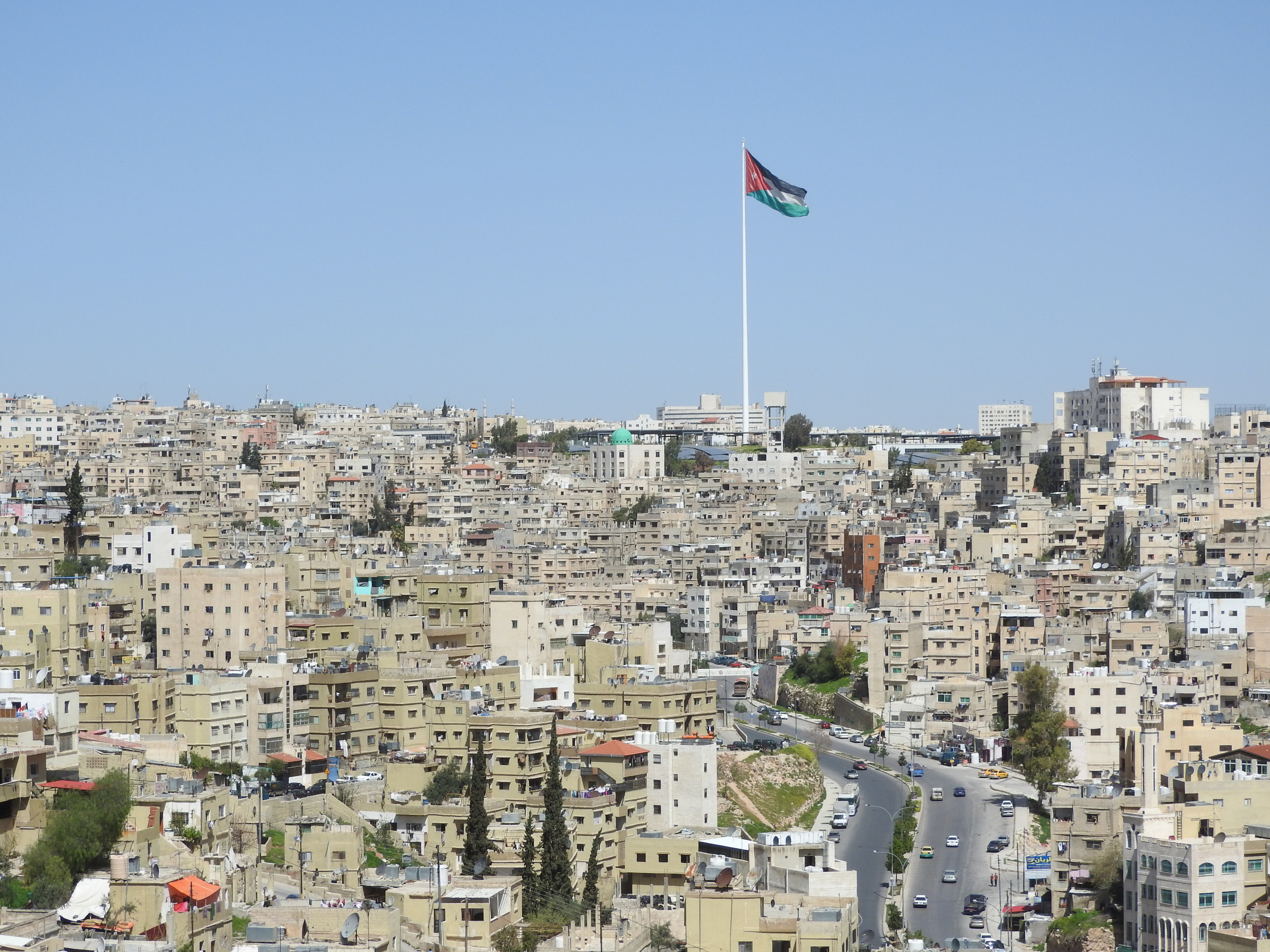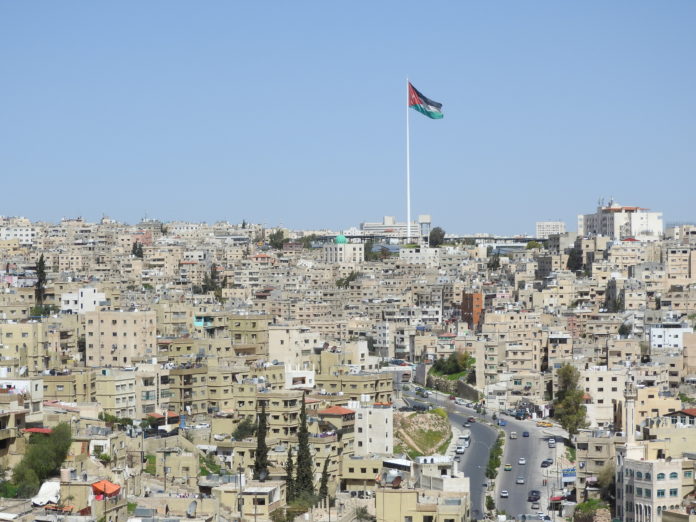 By Amy Pollard
By Amy Pollard
[dropcap]I[/dropcap]n the streets of Amman, Jordan, Vicky Kelberer checks a map on her smartphone for what feels like the billionth time. But she’s not lost. And it’s not just any map. She’s scrolling through Urban Refuge, a mobile app developed by a Boston University course and Microsoft that maps aid organizations for refugees in Amman. It’s January and Kelberer has traveled thousands of miles to visit these organizations and update their information in the app, which is set to launch this summer.
Jordan hosts over 650,000 Syrian refugees, making it the third largest refugee host country in the world. Camps such as Za’atri accommodate only a fraction of Syrian refugees. Nearly 80 percent live in Jordan’s cities. Over 177,500 Syrian refugees live in Amman, cramming into rundown apartments in the city’s East side, along with low-income Jordanians and refugees from Palestine, Iraq and Sudan.
“It’s difficult for [urban] refugees to know what actual services exist,” says Kelberer, who recently published a United Nations report based on her research in Amman.
Unlike refugees in camps, refugees in Amman have to locate aid largely on their own, relying on a word-of-mouth system that can lead to the city’s hundreds of aid organizations having too many clients or too few. That’s what Urban Refuge seeks to change.
…

Put twenty-two students in a classroom, hand them a problem like the Syrian refugee crisis and ask them to innovate a practical solution—that’s more or less the blueprint for Urban Refuge.
You May Also Like: Doctor in Your Pocket – the New Era of Mobile Health!
Boston University professor Noora Lori and Kelberer, her graduate assistant, challenged the students in their spring 2016 international relations class on forced migration and human trafficking to come up with a real-world project that could help refugees. Looking back, Lori says the challenge was meant to be more about the learning process than creating a product. But her students had other plans.
“Right now, we write a lot of great things as students that go unheard, unlistened to, unread,” says Ellie Hitt, a former student who now serves as Urban Refuge’s co-director of marketing. “We wanted to harness this creative intelligence.”
In the first few weeks, as the students researched refugee health, employment and education, a problem kept coming up—refugees often didn’t know where to find help in Amman. That led to a process of sorting through what Kelberer calls “a million bad ideas” for ways to address the problem.
“There was this crazy brainstorm. It was super stressful,” says Andrea Vidal, a former student who now works with Hitt as co-director of marketing. “That class was the entire class. Every single time, we’d come in and brainstorm. It would change every week.”
The students thought that technology could provide a solution, but didn’t know exactly how. They considered a website. Then an add-on to an existing app. Then one day, it hit them: what about an app that maps aid?
“We realized there’s no ‘refugee filter’ in Google Maps,” says Kelberer.
“A lot of the maps aren’t correct in Amman,” says Hitt. “A lot of information might be online, but it’s not accurate.”
With that, the students set to work creating a database. They spent hours scouring UN reports for nonprofits, government agencies, religious groups and community based organizations that served refugees in Amman. Through cold calls, emails and online searches, they gathered information about each organization, including address, hours of operation, services available and clientele, since donor funding is often earmarked for particular refugee populations.
None of the students had previous experience in business or technology. So they turned to various groups in Boston and Amman for assistance. That makes Urban Refuge’s logo—a skyline combining Boston’s Citgo sign and Amman’s citadel—particularly fitting. At Boston University, the students learned coding basics from the BU Global App Initiative. They received free startup advice from the BU Ventures Accelerator and free English-Arabic translation services from the BU Arabic Society.
You May Also Like: Making the Most of Mobile Phones
“Boston is such an educated city,” says Sara Mejias, who graduated from BU last year and currently serves as Urban Refuge’s CEO. “That’s why this app was created here. There are so many people who want to create the next best thing and do something positive in the world.”
In Amman, Urban Refuge partnered with Jordanian consulting firm Q Perspective and international nonprofit Caritas to find aid organizations and arrange Skype calls with Syrian and Jordanian college students.
The app sparked interest. “I thought it was a great idea,” says Hana Asfour, head of research and evaluation at Q Perspective. Asfour regularly conducts focus groups and interviews with Syrian refugees as part of her consulting work. “It helps refugees who are vulnerable to access necessary services. If it’s done the right way, it will be very useful for them.”
In just a few months, the students had laid the groundwork for the app, which they named Urban Refuge or, in Arabic, aman fi amman (“safety in Amman”). Little did they know just how far the idea would take them.
…
An app like Urban Refuge is quite ambitious, but it seems feasible in a city like Amman. Heralded in a 2012 Washington Post article as “The Arab World’s Silicon Valley,” Amman bustles with tech startups and entrepreneurs. The Jordan Times reported in 2016 that smartphones account for about 70% of mobile phones used in Jordan. Besides Facebook, WhatsApp and YouTube, popular apps in Amman include local apps such as Jeeran, which helps users locate and review restaurants, shopping and entertainment, as well as health, education and legal services.
Syrian refugees have access to smartphones, though the exact number is unknown. The New York Times reported in 2015 that many refugees arrive at their destinations with smartphones, having relied on them to navigate and communicate about routes, transportation and border guards. A 2015 Wired article noted high levels of WhatsApp and Facebook activity among refugees in transit, as well as smartphone charging stations set up on some of their routes.
Perhaps Urban Refuge’s greatest breakthroughs came after the semester ended in May 2016. Lori, Kelberer and all twenty-two students decided to continue the project as a nonprofit. “No one really cared about their grade,” says Mejias. “We knew this was ultimately more than just our grade.”
The first breakthrough came when Urban Refuge partnered with Microsoft New England over the summer. Connected through the BU Initiative on Cities, the team met with Microsoft developers James Sturtevant and Gavin Bauman, who took on the project pro bono. By November, they built the app and handed it over to a tech team at the BU Hariri Institute for Computing for maintenance.
The team knew there would be expenses with the app’s upcoming launch, so they ran a crowdfunding campaign from August to December—and that led to the second breakthrough. They set the goal at $15,000, but ended up raising $17,810. The crowdfunding page shows contributions from 181 donors.
“All these things kept happening and convinced me we were doing something much bigger than ourselves,” says Hitt. “We were doing the right thing, with the right people, with the right mindset.”
…
Open Urban Refuge and you’ll see a dark purple interface with five mint-green circles. Each circle contains a different symbol, representing one of five categories of aid: education, finance, housing, health, employment. Tap the briefcase, for example, and a map appears of aid organizations offering job-related services. Select an organization and a screen pops up with information in English and Arabic such as the name, location, refugee population served and services offered. The app automatically refreshes and updates information in real time. It also caches data locally in the smartphones, so the app won’t crash if the internet connection drops.
“All the information they need about NGOs is there between their hands,” says Abeer Massri, a Syrian immigrant and transactional attorney at a law firm in Boston.
Massri discovered Urban Refuge while pursuing her LLM at Boston University. She sat in on Lori’s class and “just fell in love with the idea.” She’s offered pro bono legal services to Urban Refuge ever since.
“What I love about this idea, the heart and soul of Urban Refuge, is empowering refugees,” says Massri, who immigrated to the United States in 2012. “I know how it’s hard to be categorized as only refugees. If you want to help Syrian people, start to think about them more like people and less like refugees.”
Other Boston-area professionals also joined Urban Refuge. When Harvard Medical School instructor David Scales read about Urban Refuge in a BU Today article, he reached out to Lori. Scales, who is fluent in Arabic, has spent months in Amman treating patients with spinal cord injuries in apartments filled with wounded people, including a 3-bedroom apartment that housed 40 injured men from the Free Syrian Army. “It was so clear that what we were doing, we had to do together,” he recalls of his meeting with Lori.
Scales has seen first-hand that many aid workers and refugees don’t know where to find aid in Amman. “Nobody knows for sure,” he says. “Everyone says, ‘Maybe you should try this place or that place,’ but no one has single resource they can pull up, whether that’s a phone book, app, website, to say ‘hey, these are places you need to go.’”
During his most recent trip to Amman in March, Scales presented the Urban Refuge app to health care colleagues at the International Organization for Migration, including Heather Burke, a Centers for Disease Control epidemiologist on detail to IOM.
“It was a big room with a lot of people and everybody was paying very close attention,” recalls Burke, who works with IOM to administer health screenings for refugees being resettled.
Some refugees come to Burke’s clinic and receive a diagnosis they didn’t know about before. “It would be helpful for one of our clinicians to be able to say, ‘Here’s this app, you can look in your area and see what resources are available where you live,’” she says. “We’re just one partner in Jordan. A lot of our clinicians struggle with being able to provide support to the refugees they see every single day.”
…
It’s been more than a year since the class ended, but Lori, Kelberer and all twenty-two students are still working on Urban Refuge. Next on their agenda is recruiting a team of interns in Amman to help with verifying the 200 organizations currently in the database. Then the team will release the app to a few hundred users and, once any glitches are fixed, launch it in the app store.
Urban Refuge has been steadily gaining momentum among business, tech and government officials. Lori visited Amman in March, two months after Kelberer’s trip, to meet with the UN’s refugee agency, Jordanian government officials, Microsoft Jordan, and others. The team hopes the momentum will continue as it approaches the launch, which is slated for the summer.
“I’m very grateful for everyone,” says Massri. “We never expected that to happen. This is a step toward humanity. It’s bringing out the goodness in people.”
“Refugee studies can seem really depressing, but it’s one of those fields you feel like you’re getting so much more than you give,” says Kelberer. “Refugees are some of the most incredible, resilient people on the face of the earth.”
(Amy Pollard is a freelance journalist based in Boston. Her interests include health, politics and tech. You can find her on Twitter @amyannexu or visit her profile https://











